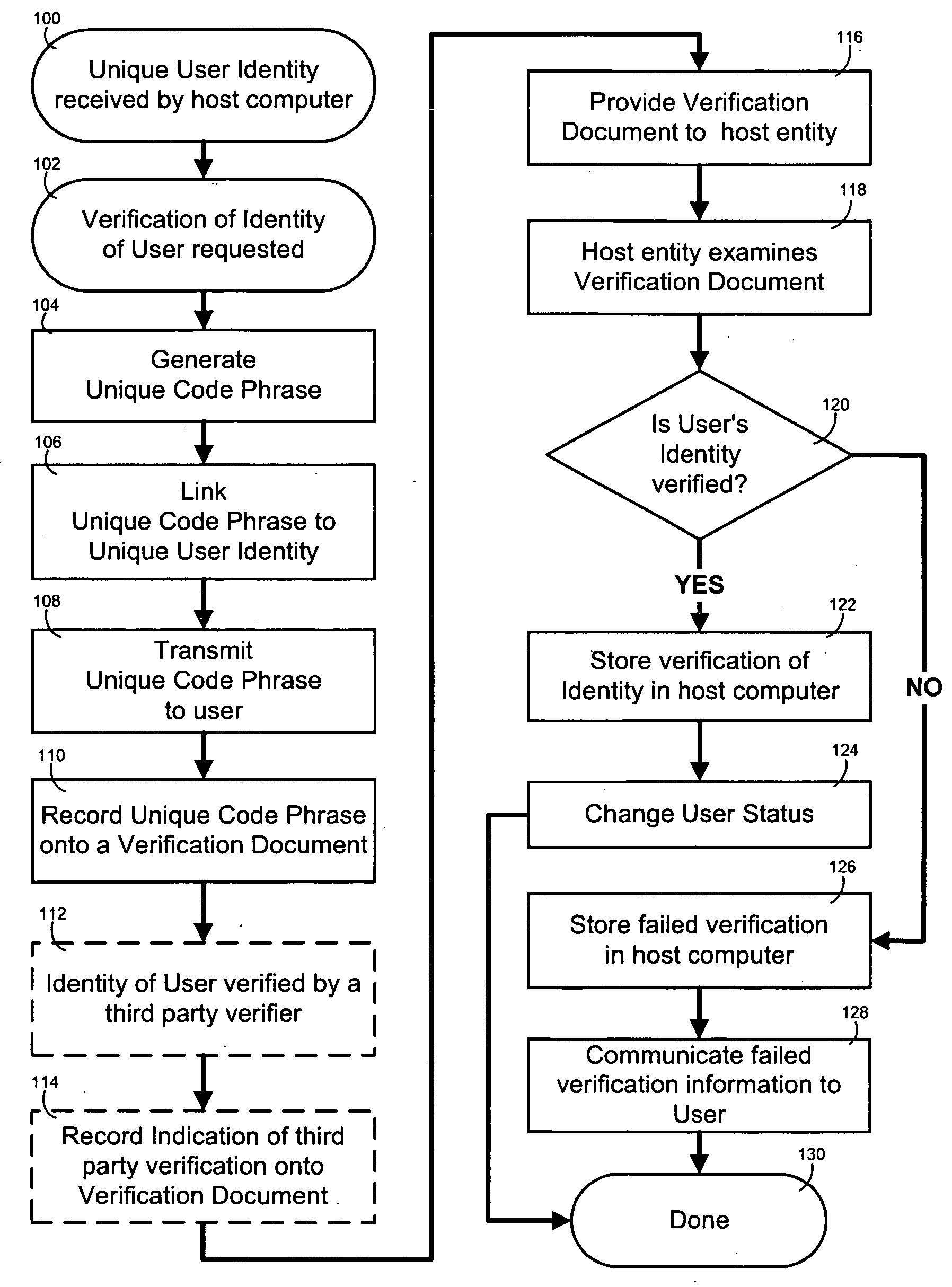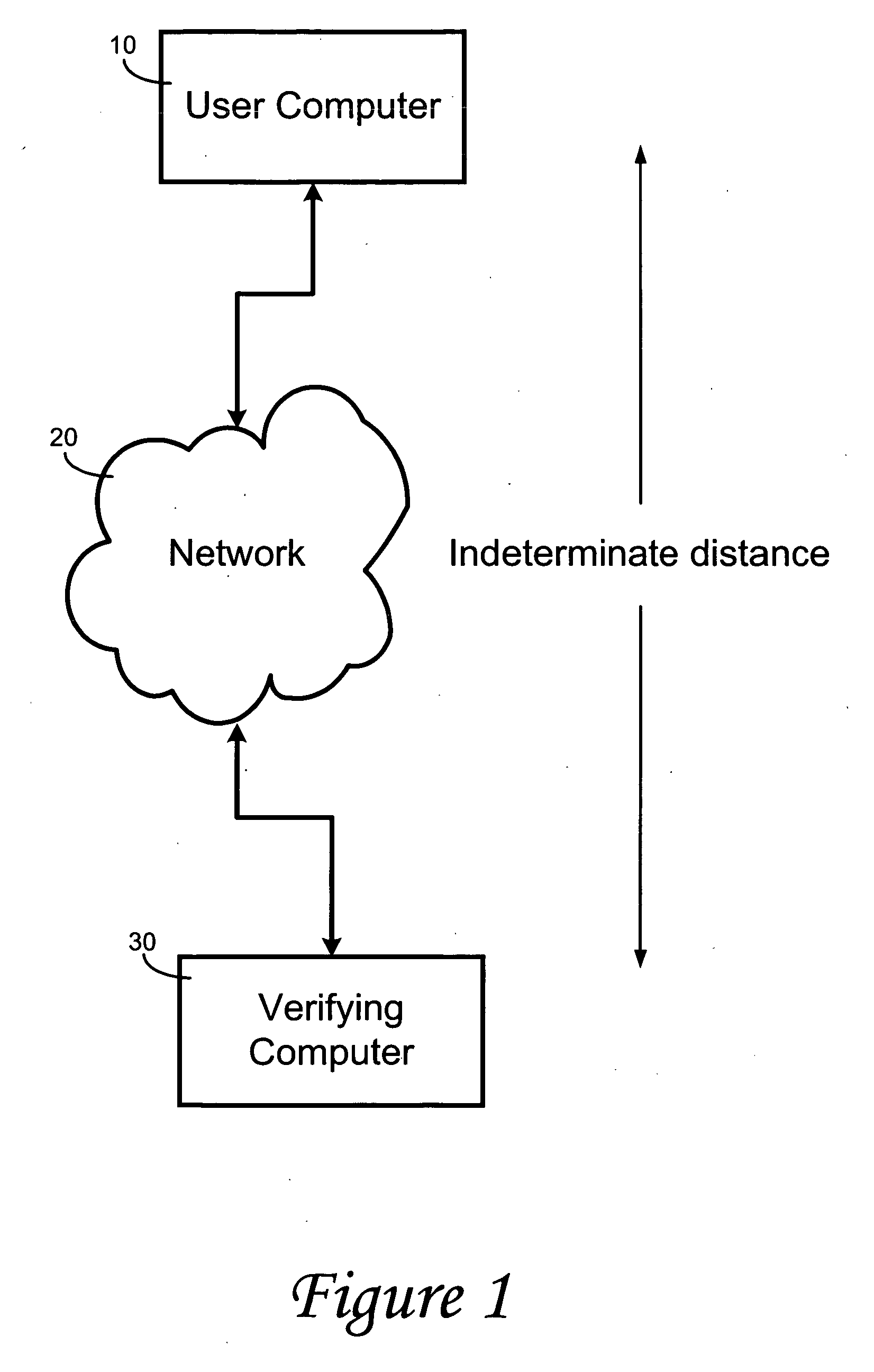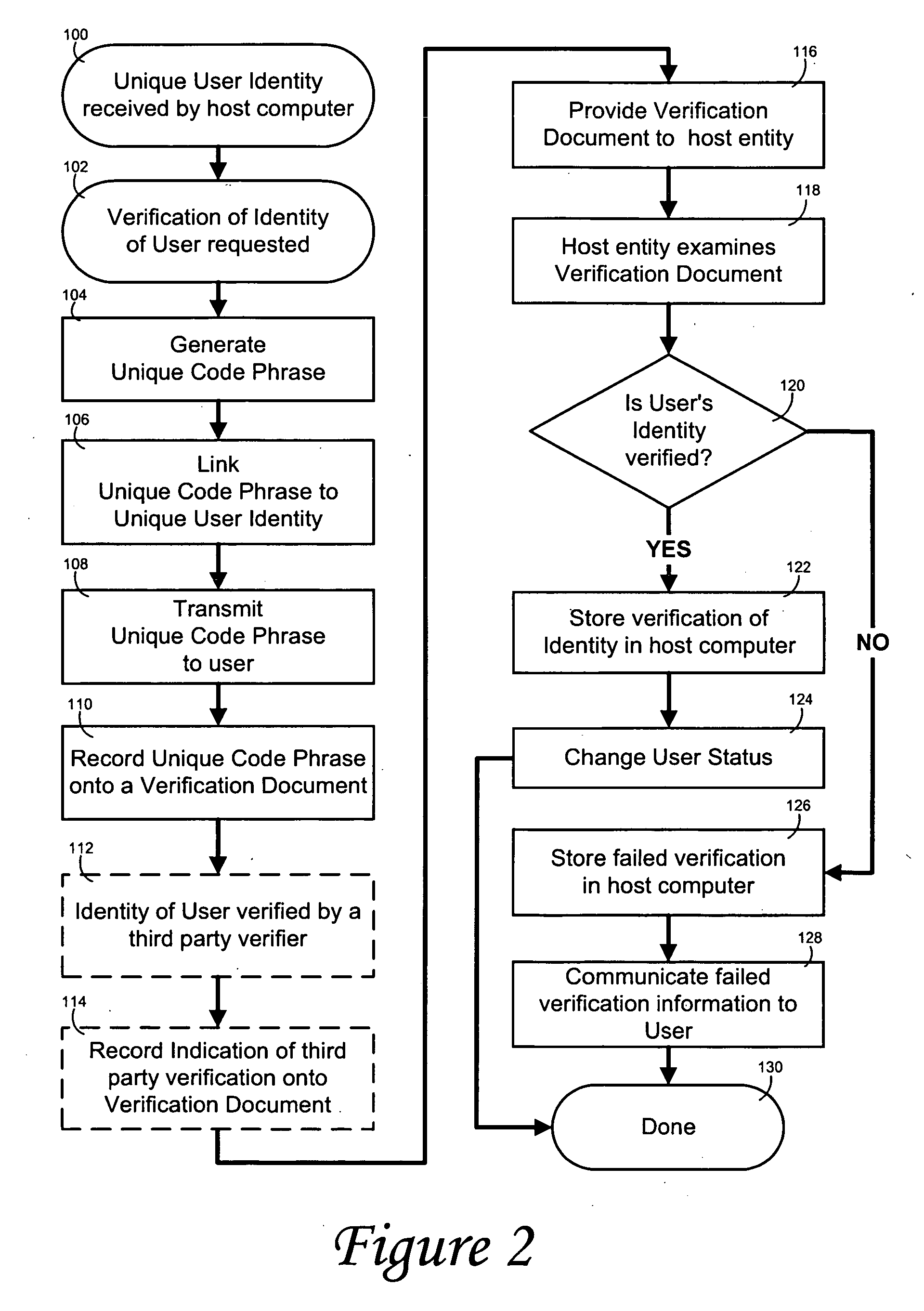Self-enrollment and authentication method
a self-enrollment and authentication method technology, applied in the field of self-enrollment and authentication methods, can solve the problems of insufficient address, limited prior art solutions, and often impractical or prohibitively expensive use of conventional identification methods, and achieve the effects of reducing costs for users and organizations, being convenient, inexpensive, and accura
- Summary
- Abstract
- Description
- Claims
- Application Information
AI Technical Summary
Benefits of technology
Problems solved by technology
Method used
Image
Examples
Embodiment Construction
[0015]FIG. 1 is a schematic diagram showing the relationship between a user computer and a verifying computer through a network.
[0016]FIG. 2 is a schematic diagram illustrating the steps of a self-enrollment and authentication method according to the invention.
[0017]FIG. 3 is a chart showing the progress of several hypothetical users of the method from log on through establishment of a Unique Code Phrase.
[0018]FIG. 4 is representation of a Verification Document according to the invention.
DETAILED DESCRIPTION OF THE ILLUSTRATED EMBODIMENT
[0019] A self-enrollment and authentication method is described below and illustrated in the accompanying drawings according to the invention. The method of the invention is preferably for use between an individual using a user computer 10 who is logged onto a verifying computer 20 through a network of computers 30 wherein the distance between the verifying computer and the user's computer is indeterminate. The method is equally applicable to a c...
PUM
 Login to View More
Login to View More Abstract
Description
Claims
Application Information
 Login to View More
Login to View More - R&D
- Intellectual Property
- Life Sciences
- Materials
- Tech Scout
- Unparalleled Data Quality
- Higher Quality Content
- 60% Fewer Hallucinations
Browse by: Latest US Patents, China's latest patents, Technical Efficacy Thesaurus, Application Domain, Technology Topic, Popular Technical Reports.
© 2025 PatSnap. All rights reserved.Legal|Privacy policy|Modern Slavery Act Transparency Statement|Sitemap|About US| Contact US: help@patsnap.com



